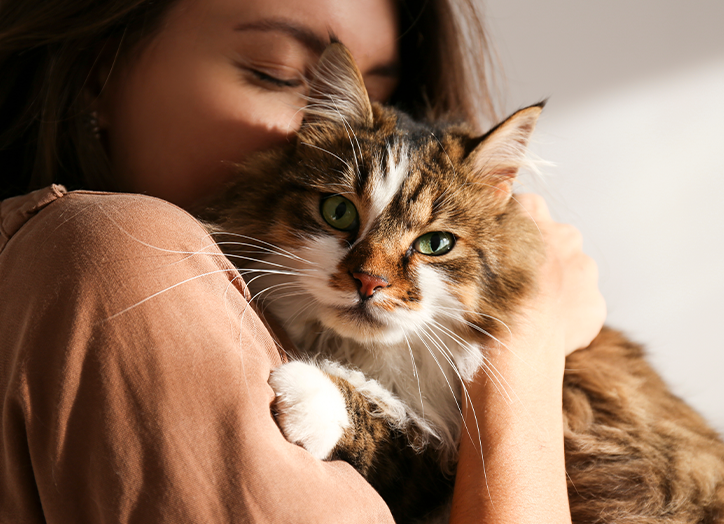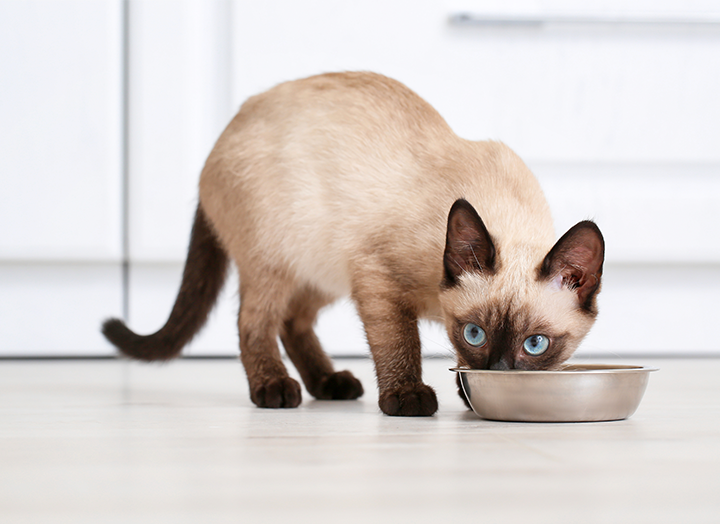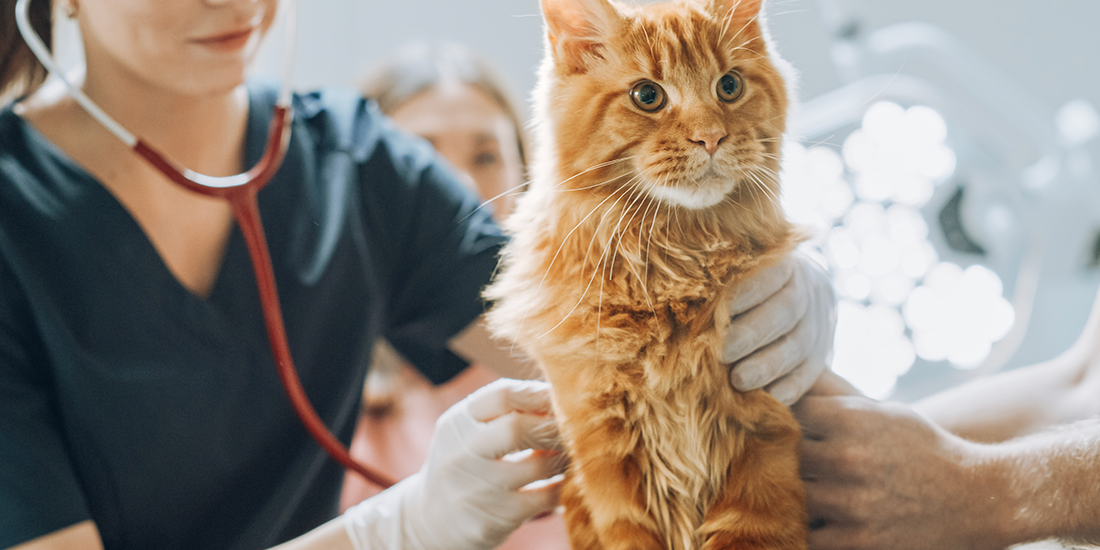[vc_row][vc_column][vc_column_text css=””]
One health concern that can affect cats is worms, a common parasite that can be both uncomfortable and potentially harmful to your furry friend. In this comprehensive blog post, we’ll answer “what do worms look like in cats” and explore the different types of worms that can affect cats, the symptoms to look out for, and the necessary steps to take if your cat has worms. Additionally, we will explore the importance of preventive measures, home care, and how your veterinarian plays a crucial role in your cat’s overall well-being.
[/vc_column_text][/vc_column][/vc_row][vc_row][vc_column][vc_row_inner content_placement=”middle”][vc_column_inner width=”1/2″][vc_column_text css=””]
Understanding the different types of worms in cats
Just like dogs, there are several types of worms in cats that can pose a problem, each with its own unique characteristics and transmission methods. When you’re able to identify worms in cats, you’ll also be able to recognize the signs of infestation more effectively. Small Door Veterinary says that the most common types of worms found in cats are:
Roundworms
These long, spaghetti-like worms are one of the most prevalent intestinal parasites in cats. Kittens can contract roundworms from their mother through the placenta or while nursing, and adult cats can become infected through ingestion of infected prey or contaminated soil. The eggs of roundworms are shed in the cat’s feces, contributing to environmental contamination.
Tapeworms
Tapeworms are segmented worms that can be transmitted to cats through ingesting fleas or small mammals such as rodents. These parasites attach themselves to the cat’s intestinal lining and can grow up to several inches in length. The most recognizable sign of tapeworm infestation is the presence of small, rice-like segments in the cat’s feces or around the anus.
Hookworms
Hookworms are small, thread-like worms that latch onto the intestinal wall and feed on the cat’s blood. Cats can acquire hookworms through ingestion or skin contact with contaminated soil or feces. Hookworms can cause anemia and lead to severe health issues, especially in young or immunocompromised cats.
Whipworms
While less common in cats, whipworms can still pose a threat to their health. These worms live in the large intestine and are transmitted through the ingestion of infected material, such as soil or feces.
Heartworms
Unlike the other worms mentioned, heartworms primarily affect dogs, but they can also infect cats. Cats are not the natural host for heartworms, which makes the infection more challenging to diagnose and treat. Heartworm transmission occurs through mosquito bites.[/vc_column_text][/vc_column_inner][/vc_row_inner][vc_row_inner content_placement=”middle”][vc_column_inner width=”1/2″][vc_column_text css=””]
What causes worms in cats?
Pet MD says that worm infestations in cats often result from contact with parasite eggs or contaminated feces. When a cat moves through an area containing these eggs or feces, its meticulous grooming habits come into play. As the cat cleans its fur and paws, it inadvertently ingests the eggs or particles, leading to infection.
Cats that live strictly outdoors and barn cats are especially prone to worms, but this risk isn’t limited to just them alone. Indoor cats are just as susceptible. In households with multiple cats, a shared litter box containing infected feces can facilitate the transmission of worms.
Outdoor cats that engage in hunting activities are particularly vulnerable. Small rodents that they catch can harbour worm larvae within their muscle tissues. Upon consuming an infected rodent, a cat’s intestines become the breeding ground for these larvae to mature, causing a full-blown worm infestation.[/vc_column_text][/vc_column_inner][vc_column_inner width=”1/2″][vc_column_text css=””]

What are the symptoms of worms in cats?
The presence of worms in your cat’s gastrointestinal system can cause various symptoms. However, it’s essential to note that some cats may not show any signs of infestation, especially in the early stages. Common symptoms to look out for include:
Vomiting
Cats with worms may occasionally vomit, particularly if they have a severe infestation.
Digestive upset
Digestive upset, often accompanied by mucus or blood, can be a sign of intestinal worms in cats.
Weight loss
One of the most common signs of worms in cats is weight loss. This can occur even if their appetite remains normal or increased.
Potbellied appearance
One of the more noticeable worms in cats symptoms. In some cases, cats with a heavy worm burden may develop a potbellied appearance due to bloating and swelling of the abdomen.
Lethargy
Worm-infested cats may appear lethargic, tired, or less active than usual.
Visible worms in feces
In severe infestations, you can identify worms in cats by noticing them in your cat’s feces or around the anus.
Anal irritation
Cats may display signs of discomfort around the anus, including excessive licking or scooting.[/vc_column_text][/vc_column_inner][/vc_row_inner][vc_row_inner content_placement=”middle”][vc_column_inner width=”1/2″][vc_column_text css=””]
How to get rid of worms in cats
If you suspect any signs of worms in cats or notice any of the symptoms mentioned above, it’s crucial to take immediate action to ensure your feline friend’s health. If you’re wondering how to treat worms in cats, here’s what you can do!
Visit the veterinarian
The easiest treatment for worms in cats is to schedule an appointment with your holistic veterinarian. They will conduct a physical examination of your cat and may request a fecal sample for analysis to identify the type of worms present. Accurate diagnosis is essential, as different worms require specific treatments.
Follow your vet’s recommendations
Based on the diagnosis, your veterinarian will recommend an appropriate treatment plan. Treatment typically involves administering deworming medications designed to target the specific type of worms affecting your cat. It’s essential to administer the prescribed medications as directed by your vet to ensure the effective elimination of the worms.
Preventative measures
After treatment, your veterinarian may advise you on preventive measures to reduce the risk of re-infestation. Regular deworming, flea control, and maintaining good hygiene in your cat’s environment are essential to prevent worms from returning. Keep your cat indoors, as outdoor cats are more prone to worm infestations.
Practice good hygiene
Another form of treatment for worms in cats is to ensure proper hygiene practices in your home, such as regular litter box cleaning, washing hands after handling your cat, and keeping your cat’s living area clean. Disposing of feces promptly also helps prevent environmental contamination.
Regular check-ups
Schedule regular check-ups with your veterinarian to monitor your cat’s health and address any potential worm-related concerns promptly. Regular check-ups also allow your vet to provide personalized advice on maintaining your cat’s health and well-being.[/vc_column_text][/vc_column_inner][vc_column_inner width=”1/2″][vc_column_text css=””]

What to feed a cat after worms
After a cat has experienced worms, it may have gone through some weight loss or be in more of a lethargic state. We recommend trying a Bold By Nature raw recipe to help them feel themselves again.
Cats are obligate carnivores, meaning their bodies require animal protein. A cat raw food diet consists of uncooked and unprocessed ingredients and typically includes raw meats, bones, organs, and sometimes fruits and vegetables. It’s an ideal diet to feed cats as it provides them with a more natural diet that mimics what their ancestors would have eaten in the wild. It can even help improve their overall health and is an excellent choice of hyperthyroidism food for cats.
A Bold by Nature raw diet provides your cat with many proteins. Within these proteins are amino acids that promote muscular strength, growth, and physique. Each recipe contains low glycemic ingredients, no unnecessary calories, and assists your cat in reaching a healthier weight by losing the excess or gaining what’s needed. Due to minimal ingredients, a raw diet is also the best cat food for allergies.
Bold by Nature offers your feline friend several different formulas that they’re sure to love, like raw chicken for cats. Each high protein, low carbohydrate diet is packed with benefits that can give your cat a digestive boost, a cleaner coat, stronger bones, and more.[/vc_column_text][/vc_column_inner][/vc_row_inner][vc_row_inner content_placement=”middle”][vc_column_inner width=”1/2″][vc_column_text css=””]
Where can I buy Bold by Nature products?
Ready to get started on your raw journey? You can purchase Bold by Nature products like raw cat food in Canada either online or at a local retailer. If you’re unsure of which stores carry our products, you can use our location finder to explore retailers.[/vc_column_text][/vc_column_inner][vc_column_inner width=”1/2″][vc_column_text css=””]
Conclusion
Cats with worms can experience discomfort and potential health complications if left untreated. Being aware of the worms in cats symptoms will help you take quick action by seeking veterinary care can help ensure the well-being of your feline friend. Remember, regular vet check-ups, proper hygiene, and preventative measures are crucial in safeguarding your cat against worms and other parasites.
As a responsible cat owner, your vigilance in monitoring your cat’s health and adhering to your veterinarian’s advice can lead to a healthy, happy, and worm-free life for your beloved feline companion. By taking proactive steps and providing the best care possible, you can create a safe and loving environment for your cat, ensuring they enjoy a long and fulfilling life by your side.
[/vc_column_text][/vc_column][/vc_row]












